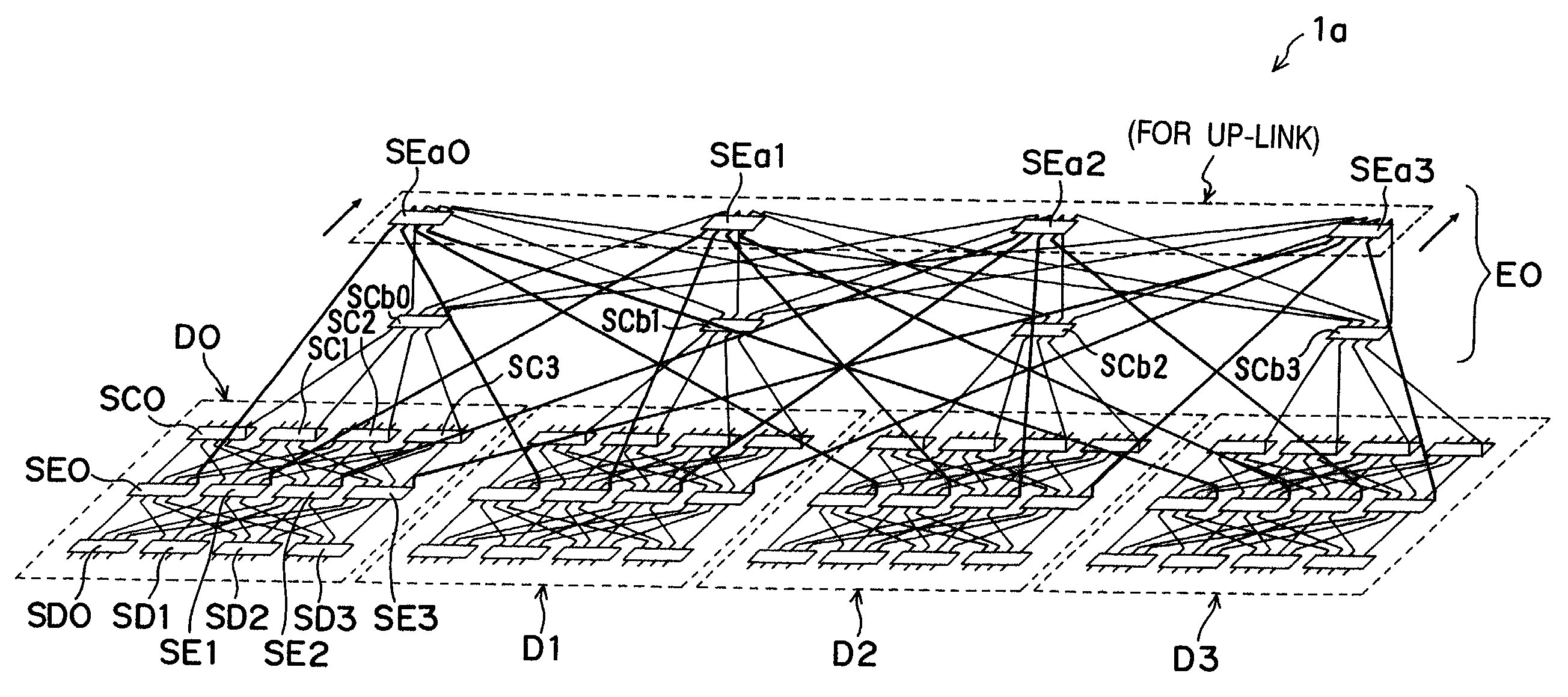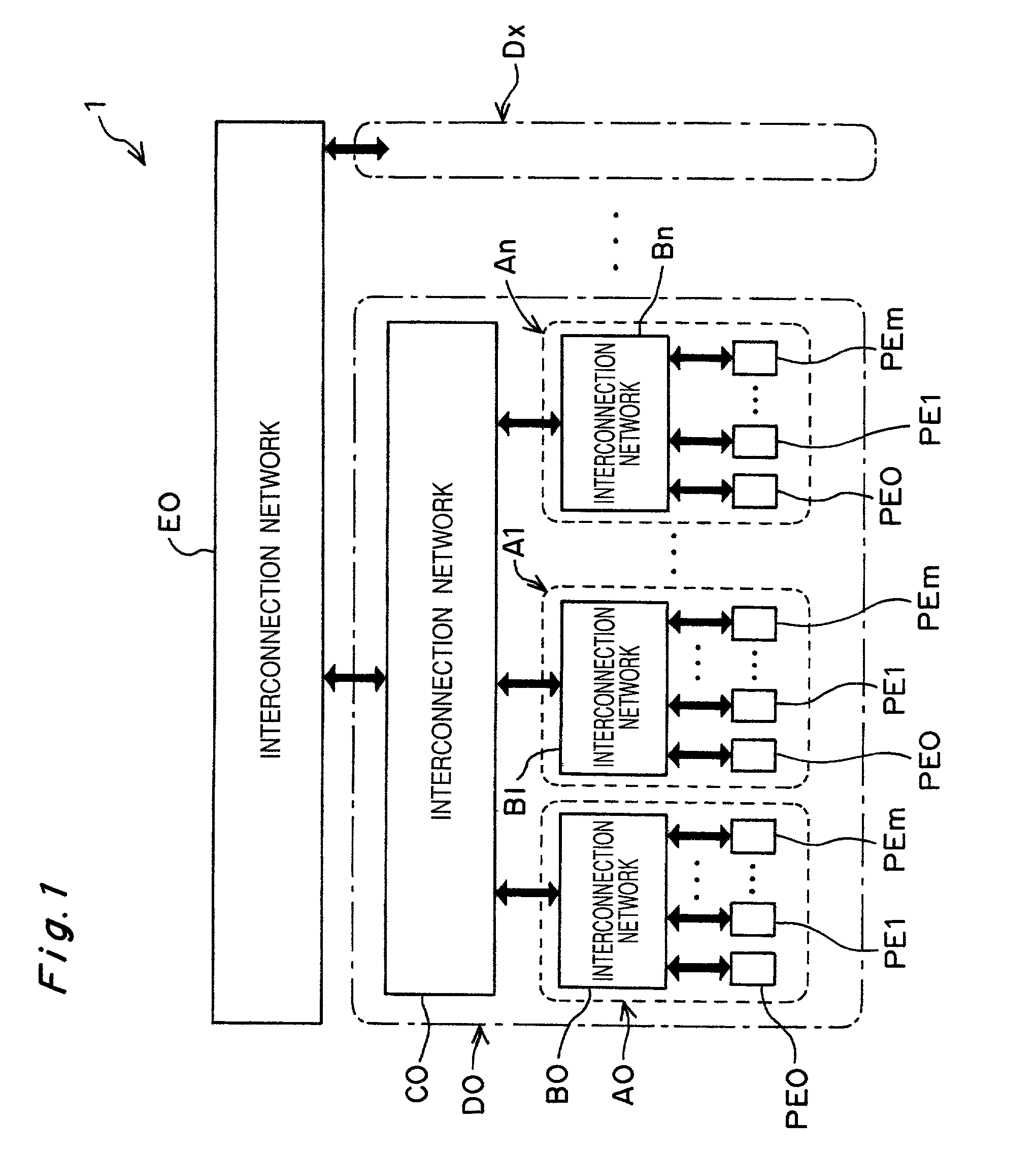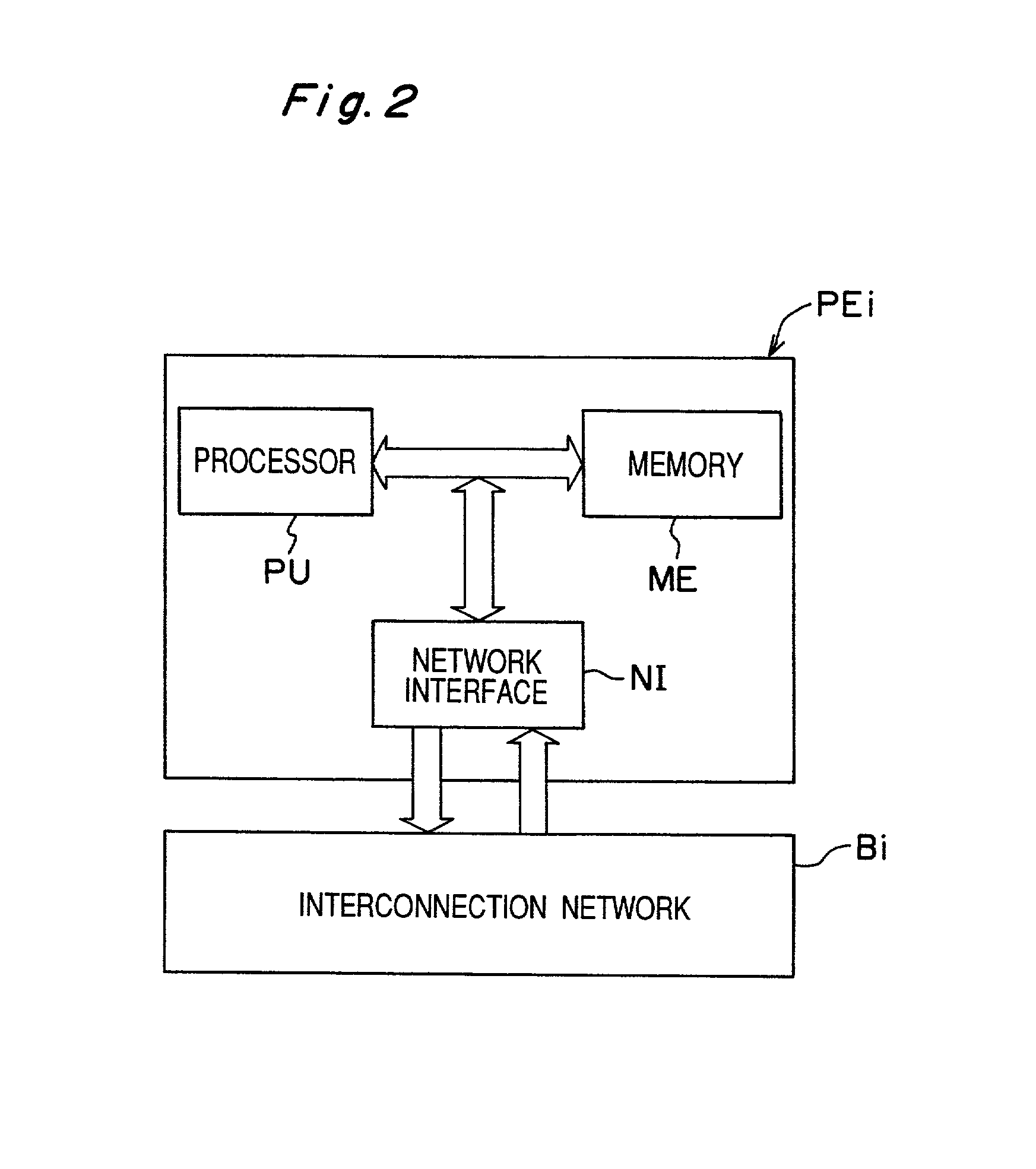Multi-processor system apparatus allowing a compiler to conduct a static scheduling process over a large scale system of processors and memory modules
- Summary
- Abstract
- Description
- Claims
- Application Information
AI Technical Summary
Benefits of technology
Problems solved by technology
Method used
Image
Examples
first embodiment
[0040]FIG. 1 is a schematic block diagram of a multi-processor system apparatus showing the first embodiment of the present invention.
[0041]As shown in FIG. 1, the multi-processor system apparatus 1 has some tens to thousands of processor elements PE interconnected by a multi-stage interconnection network (MIN) having multiple stages. The multi-stage interconnection network shown in FIG. 1 includes three layers.
[0042]The multi-processor system apparatus 1 includes a group of clusters D0 to Dx (x being an integer, X>0) and an interconnection network E0 for connecting between the clusters D0 to Dx. Each of the clusters D0 to Dx includes clusters A0 to An (n being an integer, n>0) and an interconnection network, one of C0 to Cx, for connecting between the clusters A0 to An. Similarly, each of the clusters A0 to An includes processor elements PE0 to PEm (m being an integer, m>0) and an interconnection network, one of B0 to Bn, for connecting between the processor elements PE0 to PEm.
[00...
second embodiment
[0123]According to the first embodiment of the present invention, all the packets may be dispatched towards the second stage at Level 1 of the exchanger for connection between the two clos networks or each of the switching elements SE0 to SE3 in clos network shown in FIG. 6, thus developing a hot spot at the local and declining the overall performance. For compensation, the concentrator at Level 1 may additionally be provided as the switch for downward transferring data from the upper stage to the lower stage. This is implemented by the second embodiment of the present invention. The arrangement of a multi-processor system apparatus and the arrangement of its processor elements according to the second embodiment are identical to those shown in the block diagrams of FIGS. 1 and 2 and will be explained in no more detail.
[0124]FIGS. 20 and 21 are diagrams of a multi-processor system apparatus of a multiple stage clustering arrangement showing the second embodiment of the present invent...
PUM
 Login to View More
Login to View More Abstract
Description
Claims
Application Information
 Login to View More
Login to View More - R&D
- Intellectual Property
- Life Sciences
- Materials
- Tech Scout
- Unparalleled Data Quality
- Higher Quality Content
- 60% Fewer Hallucinations
Browse by: Latest US Patents, China's latest patents, Technical Efficacy Thesaurus, Application Domain, Technology Topic, Popular Technical Reports.
© 2025 PatSnap. All rights reserved.Legal|Privacy policy|Modern Slavery Act Transparency Statement|Sitemap|About US| Contact US: help@patsnap.com



